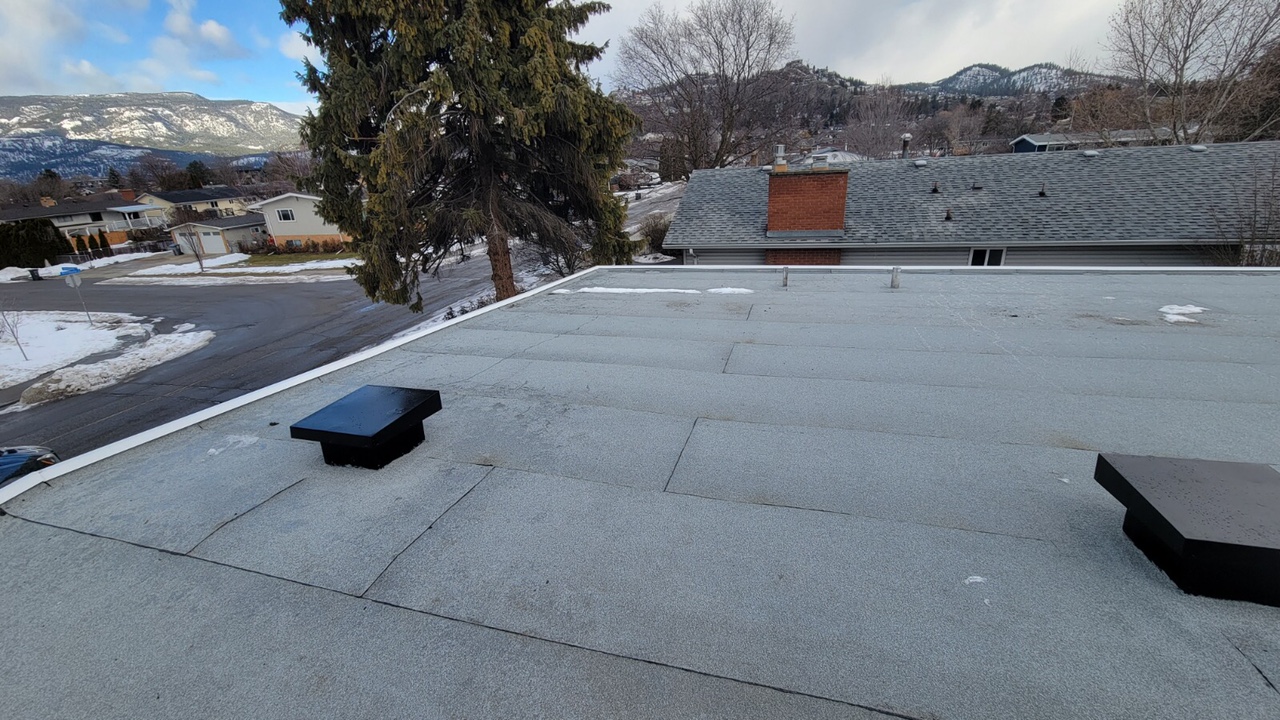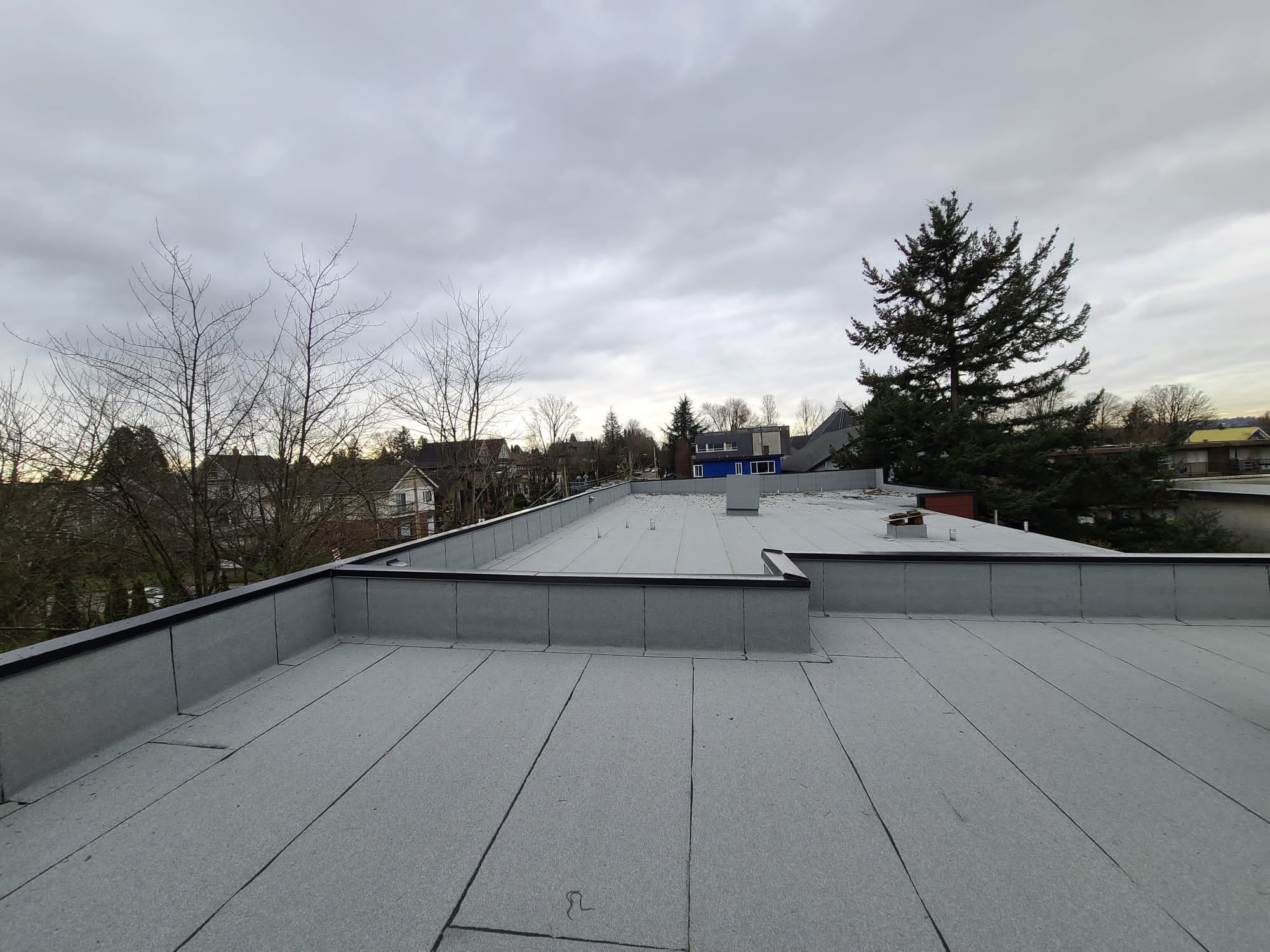Material for Residential Flat Roofs

There are many options available when you are planning a roofing project. For a residential roof, peaked roofs are often the standard for construction, but flat roofs have advantages as well, including increasing the usable space inside a residence and being cheaper and easier to construct than a peaked roof. However, flat roofs generally will require more monitoring and maintenance over time, and can be more prone to leaks. In any roofing job, you will want to choose materials that best suit your needs and your budget. Below, we will look at some of the most popular materials for residential flat roofs and review some of their pros and cons.
Built-up roofing (BUR)
Also known as tar-and-gravel roofing, BUR is a common and inexpensive way to finish a roof. It involves putting down alternating layers of a waterproof materials and hot tar – at least three layers, possibly more – and then finishing the roof with stone. BUR is a popular choice because the materials are cheap, it’s very fire retardant, and it’s easy and cheap to repair. However, it is heavy, and can require extra structural support in a residential build. It can also be difficult to trace leaks and requires regular preventative maintenance.

Modified bitumen roofing
Modified bitumen roofing is essentially a material that is similar to BUR but is “pre-assembled” and can just be unrolled and secured in place. There are two common styles: peel-and-stick, which has a strong adhesive backing, and torch- or heat-welded, which needs to be heated as it is applied in order to adhere properly. The advantages of modified bitumen roofing materials are that they are very heat-reflective, which can reduce your energy bills, they can be very durable, and they are easy to install – the peel-and-stick material can even conceivably be a DIY project. However these materials are more expensive than BUR, and while they are quite robust, they can be prone to tearing and scuffing – and thus leaking – if the roof isn’t well-maintained.
Rubber membrane roofing
Rubber membrane roofing is a new material in the roofing industry, and so it isn’t yet used as frequently as other more traditional roofing materials, especiall on residential roofs. This material is made of a flexible rubber base (similar to a hot water bottle) that is reinforced with synthetic fibres. While it is more expensive yet than BUR or modified bitumen roofing, its advantages are that it is lightweight, easy to install, and very durable. A rubber membrane roof can last 30-50 years and will be easy to patch. Another downside to rubber roofing is that it can absorb a lot of solar heat and so may be less desirable in a hotter climate.
The material you choose for a residential flat roof will impact your initial installation costs, the frequency with which it will need maintenance and repair, and the lifespan of the roof itself. A qualified professional roofing company can help you review your options and choose the right roof for you.

